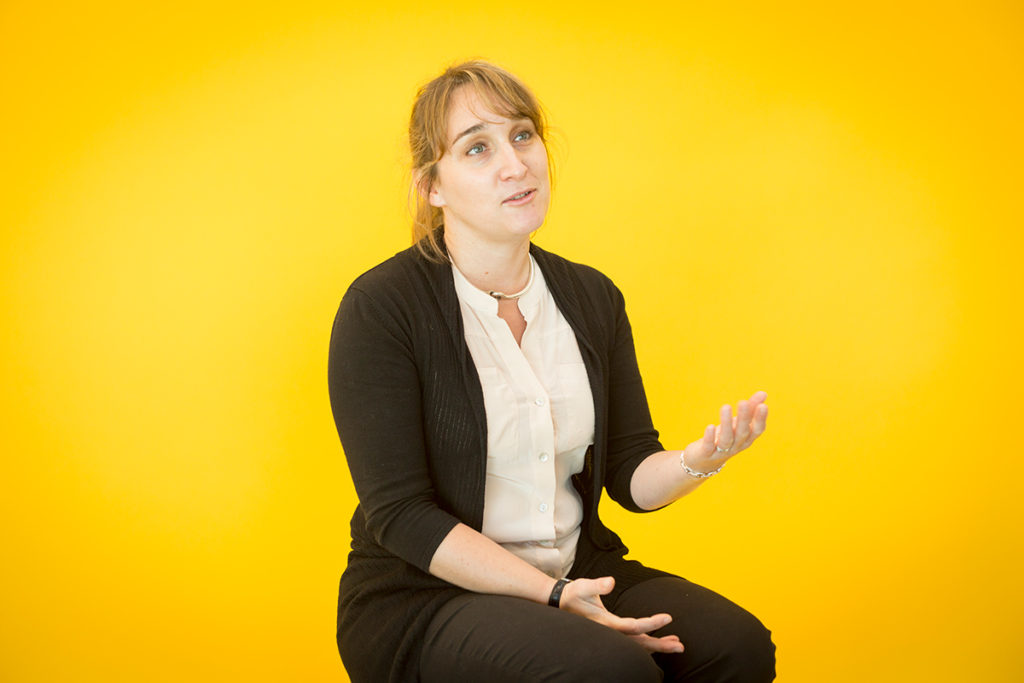
Caroline Sauvage, assistant professor of classics and archaeology in the Bellarmine School of Liberal Arts, earned a Ph.D. from Université Lumière Lyon 2, in France. Her specialties include international trade and technological developments of the eastern Mediterranean during the Late Bronze Age and Early Iron Age. We spoke to her about toolmaking and trade in the Bronze Age, as well as about destruction of the physical heritage of the Middle East currently taking place in war zones in the area.
Are products that were traded in the eastern Mediterranean during the Bronze Age still produced today?
Yes, olive oil, wine and probably cereal were traded. Oil and wine circulated between the Aegean and the Levant and Egypt. Cyprus also was probably a large producer of oil. The Aegean and the Mycenaean world were famous for perfumes, which were olive-based and made with aromats and spices.
Which tools used then would we still recognize today?
A lot of agricultural tools — sickles, picks, shovels and hammers — have stayed basically the same during the past 5,000 years.
Was bronze used only for toolmaking or did it spread into use in artwork and cultural artifacts?
When a new metal was introduced, as with bronze, people tended to use it for display and the making of beautiful, small objects. With bronze, for instance, you saw the production of personal ornaments, such as bracelets, crowns and scepters. Then we had the production of tools. It was the same with iron. At first, iron was used for daggers and other personal things of high value. Then its use spread to weapons and other items for soldiers.
Was technological change disruptive during this era?
At the end of Egypt’s Middle Kingdom (circa 1650 B.C.), the Egyptians experienced cultural shock from the introduction of chariots and horses. People from the north invaded part of Egypt and fought with horses and chariots. Horses are not native to Egypt. For the Egyptians, it was astonishing. They embraced the new chariot technology very quickly when they realized that having horses and chariots was essential to winning the war.
Was there a technological development that had to occur before bronze could be created?
The mastery of fire and temperature was essential because you need to obtain a really high temperature to melt bronze. This probably became possible with the development of ceramics, which also requires baking objects at certain temperatures. Once you can control fire and ceramic production, you can have the next step, which is working with metals.
Do wars and political conflicts destroy artifacts and evidence that are essential to your study?
Sometimes. Recent conflicts in the Near East contribute to the destruction of our cultural heritage. For instance, in Syria, monuments and ancient sites are being either destroyed or damaged by bombing and shelling. Illegal excavation can take place at archaeological sites, as was the case in Iraq.
Do organizations cooperate across political borders to protect the physical heritage of the eastern Mediterranean?
Yes, UNESCO is the main actor. In recent conflicts, a lot of people have been attempting broad approaches to preserve our shared cultural heritage: researchers, universities, Blue Shield (the cultural equivalent of the Red Cross), nonprofit organizations and governments.
Is this a particularly discouraging period?
It is sad that I cannot access my field and that sites are being destroyed. But most of these sites have been standing for three, four or five thousand years, and the ones that are still buried can wait. If it is not me who examines them, it will be someone else. What breaks my heart is what is happening in these countries to the people, and the destruction of recent or ancient towns and monuments. Culture and cultural heritage are important to preserve. Bringing peace and preserving what we have are the most important right now.
